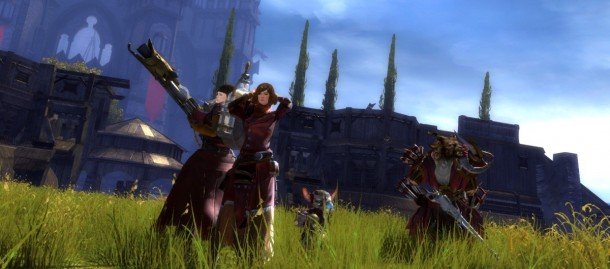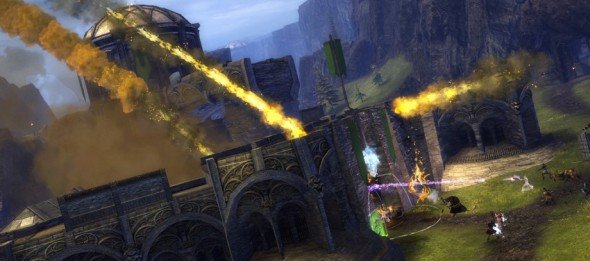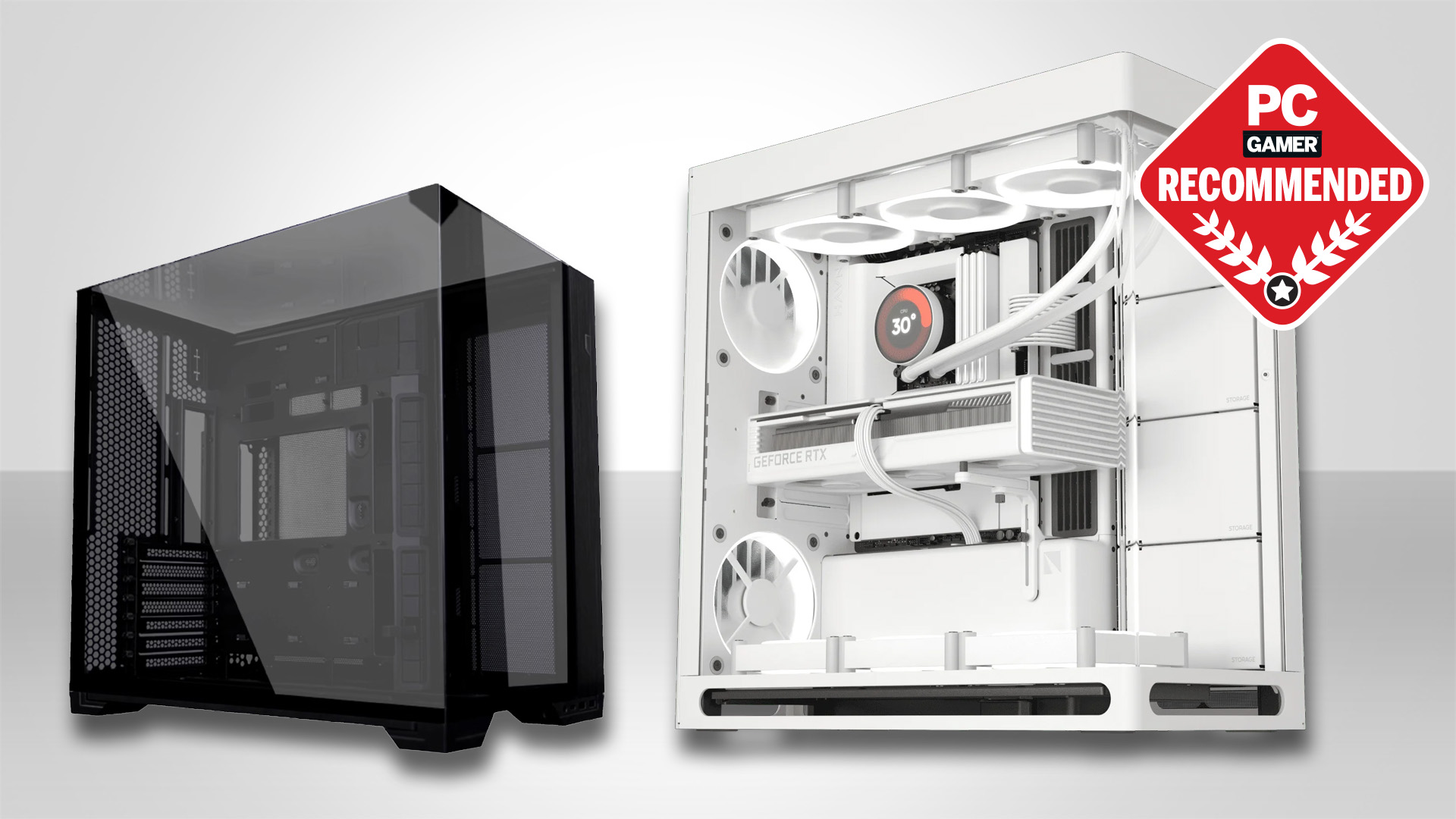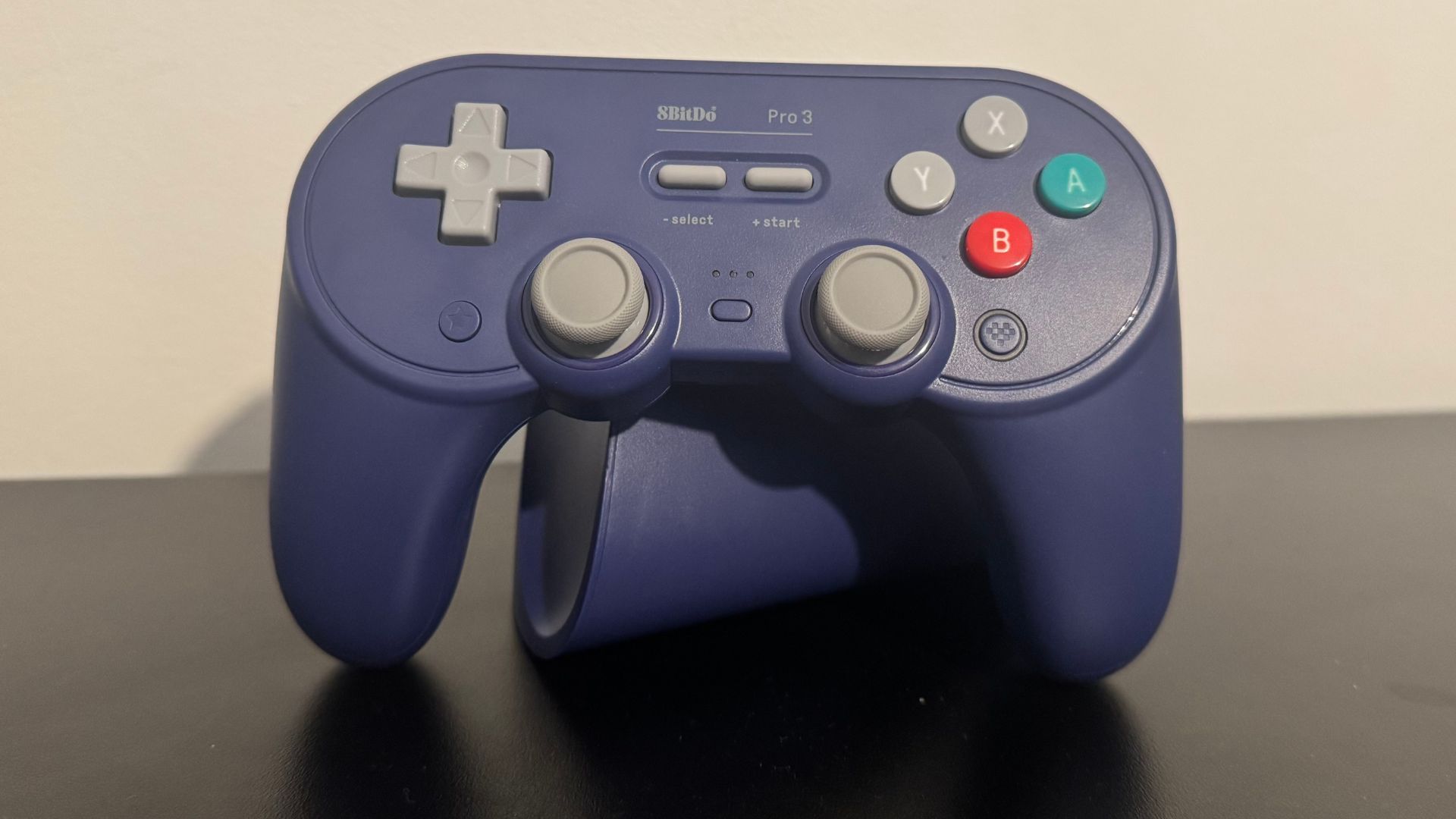Guild Wars 2 World vs. World PvP guide

Guild Wars 2's World vs. World PvP is one of the things that separates its competitive game from the majority of modern MMOs. Small-scale battlegrounds have become the norm, and the classic MMO dream of hundreds of players skirmishing across an open world has faded. World vs. World, then, is a mixed breed: something new that continues the legacy of something old. Playing it for the first time at ArenaNet's offices during the last beta weekend, I was reminded strongly of Mythic's Dark Age of Camelot, the 2001 MMO that featured expansive faction vs. faction PvP. The comparison shouldn't be a surprise: ArenaNet has more than one ex-Mythic designer on its team.
In place of fixed factions, however, World vs. World pits whole servers against one another. Every week, your server is assigned a colour and matched against two others. The green, red and blue teams then compete to defend their own territory and expand into their rivals' heartland. A fourth neutral area acts as a focal point for the conflict, and each territory can hold up to three hundred players at once. At regular intervals, the progress of each team is assessed and server-wide bonuses are applied accordingly. Holding the most territory might grant you bonuses to health, crafting success rates, or critical hit chance.
Finally, at the end of the week, a winner is declared and the match-ups are rearranged. This is a clever system because it avoids the problem that Dark Age of Camelot faced, where overpopulated factions could dominate a server with little to challenge them. In Guild Wars 2, a one-sided battle can't last for more than seven days.
World vs. World zones range from rolling grassland to snow-capped mountains, and are littered with towers, supply depots, and forts, each of which is reliant on the others. Towers are smaller fortifications, usually located at strategic points on the map. Forts are their larger cousins, and the grand prize is Stonemist Castle, a massive fortification in the middle of the neutral region. Capturing most territories is a case of breaking down the doors and killing an NPC commander, but successfully sieging Stonemist is a multi-stage affair, complicated by the array of defences that the enemy can set up.
Each capture point is supported by supply depots. These resource points dispatch caravans pulled by buffalo-like dolyak which deliver building materials within friendly territory, and keeping the supply lines open is key to the war effort. Supply allows you to repair broken doors and add additional defensive measures including boiling oil and waypoints that allow players to respawn closer to the front line. On the offensive, supply is spent on catapults and other siege weapons that speed up the time it takes to break down enemy walls.

Taking charge of a siege weapon or wall-mounted defence switches your action bar over to a set of context-sensitive abilities. Unused siege weapons can be claimed by any side - during one particularly heroic escapade, myself and one of the game's designers broke the siege of a friendly tower by sneaking around the back of the enemy, nicking one of their catapults, and using it to blow up a siege golem and everyone near it. It's the potential for adventures like this one that sets World vs. World apart.
When a supply caravan spawns, it triggers an event much like Guild Wars 2's PvE. Escorting the dolyak then falls to the players, creating mobile objectives that encourage players to move around and prevent too many bottlenecks from forming. Teams can also elect squad leaders that act as raid coordinators for their side. Leaders show up on the map as crown icons, allowing players to see at a glance where the most important fighting is likely to be. Crucially, however, leader icons appear for all sides - so while you may not know how many enemies are on their way, you will know that they're coming. The system looks like it'll encourage feints and double-bluffs, making effective scouting integral to success.
Keep up to date with the most important stories and the best deals, as picked by the PC Gamer team.
World vs. World resembles Guild Wars 2 PvE in that you're rarely stationary. My time with it was defined by constant, frantic movement: either racing to the defense of a besieged fortress or chasing an enemy back into their own territory. There's a certain amount of running involved - far more so than when you're battling monsters - but I get the impression that the extra map space will be important when the zones start to fill up. As it was, the freedom of movement allowed strike forces to infiltrate enemy territory undetected and - more than once - allowed me to escape a fight gone awry. During an early skirmish, I used the engineer's rocket jump ability to throw myself off a cliff into the river below. Hiding under a waterfall to escape detection, I became acutely aware of the sense of freedom that MMOs lost when they switched over to small-scale PvP.
One of the best things about WvW is that it isn't confined to the endgame. All participants are effectively level 80, although you're limited to the abilities that you've earned through regular levelling. High level players are therefore substantially more versatile, but it's by no means impossible for beginners to rack up kills and contribute for their side. You also receive XP and loot for killing players and NPCs within the World vs. World zones, so if you want to level entirely through competitive play you can.
Like GW2 as a whole, World vs. World relies on the interoperation of lots of individual mechanics to work, and as such it's initially chaotic and more than a little overwhelming. Balancing the game without taking away the potential for daring gambits and heroic turnarounds will take some doing, but what I've seen shows a huge amount of potential. Guild Wars 2's regular PvP will satisfy those looking for tight, team-based competition: World vs. World is something bigger, sillier, and more inclusive. It's good to have massively multiplayer PvP back.
Joining in 2011, Chris made his start with PC Gamer turning beautiful trees into magazines, first as a writer and later as deputy editor. Once PCG's reluctant MMO champion , his discovery of Dota 2 in 2012 led him to much darker, stranger places. In 2015, Chris became the editor of PC Gamer Pro, overseeing our online coverage of competitive gaming and esports. He left in 2017, and can be now found making games and recording the Crate & Crowbar podcast.


